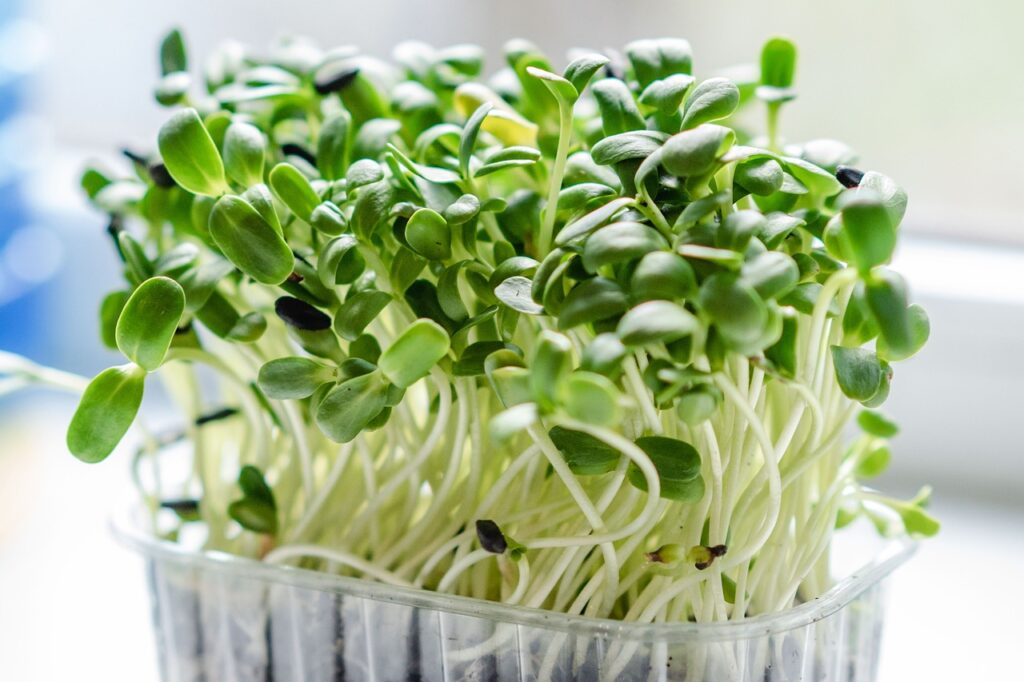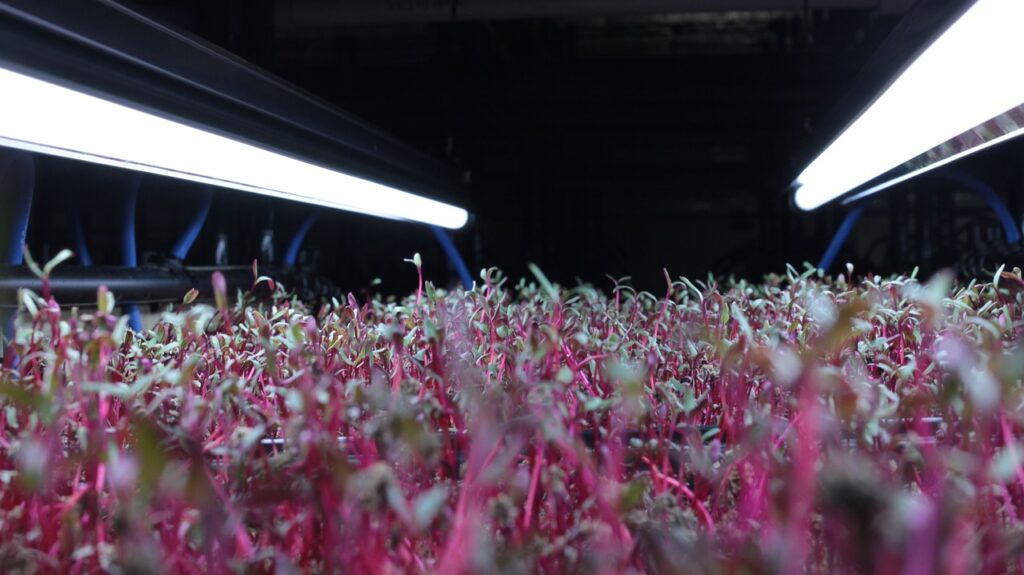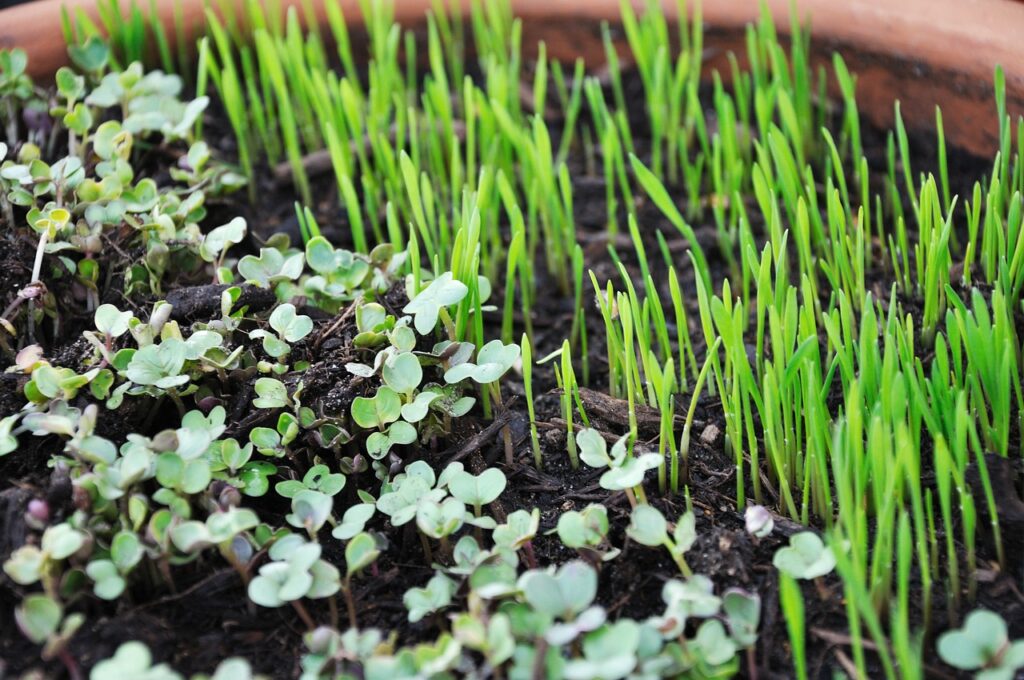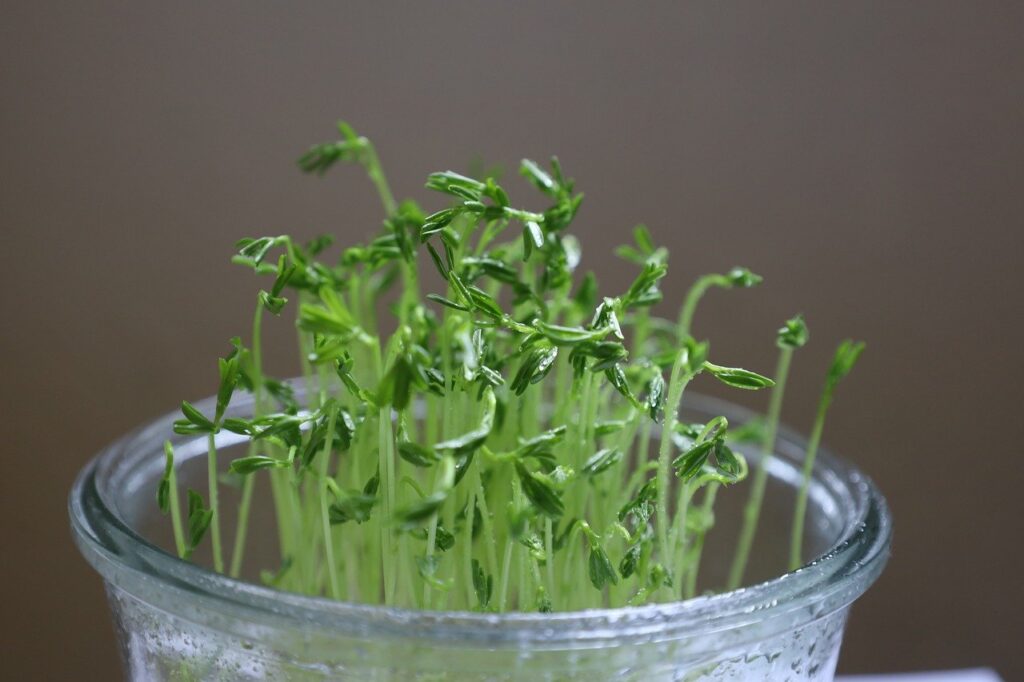
Introduction: Harnessing Nature’s Nutrient Bombs
In recent years, there has been a growing interest in the Health Benefits of Microgreens, those tiny, tender greens that pack a punch far beyond their size. These miniature versions of familiar vegetables and herbs are not just a culinary trend; they are a nutritional powerhouse, boasting an impressive array of health benefits. In this comprehensive exploration, we will delve into the world of microgreens, uncovering their nutritional composition, health-promoting properties, and the various ways they contribute to overall well-being.

I. What Are Microgreens?
Definition and Classification
Microgreens are the young seedlings of edible vegetables and herbs harvested at an early stage of growth, usually between 7 to 21 days after germination. Unlike sprouts, which are typically consumed with the seed, microgreens include both the stem and leaves. This stage of growth is a critical period where the plants are bursting with nutrients, making microgreens a potent source of vitamins, minerals, and phytonutrients.
Popular Varieties
Microgreens come in a variety of flavors, colors, and textures, offering a diverse range of options for culinary and nutritional exploration. Common varieties include broccoli, kale, spinach, radish, arugula, cilantro, and basil, among others. Each type of microgreen boasts a unique nutrient profile, contributing to the overall health benefits associated with their consumption.

II. Nutritional Composition of Microgreens
Vitamins and Minerals
Microgreens are nutritional powerhouses, often containing higher concentrations of vitamins and minerals compared to their mature counterparts. They are particularly rich in vitamins A, C, and K, essential for various bodily functions. For example, vitamin A is crucial for vision and immune function, vitamin C acts as a potent antioxidant, and vitamin K plays a vital role in blood clotting.
Antioxidants and Phytonutrients
The vibrant colors of microgreens are indicative of their high antioxidant content. Antioxidants are compounds that neutralize harmful free radicals in the body, protecting cells from oxidative damage. Microgreens contain a plethora of phytonutrients, including carotenoids, flavonoids, and polyphenols, which contribute to their antioxidant and anti-inflammatory properties.

III. Health Benefits of Microgreens
Cardiovascular Health
Microgreens have been linked to cardiovascular health due to their nutrient content. For instance, studies have shown that the consumption of broccoli microgreens can lead to a reduction in LDL cholesterol levels, helping to maintain heart health. The presence of dietary nitrates in certain microgreens, such as beet and Swiss chard, has been associated with improved blood vessel function and blood pressure regulation.
Blood Sugar Regulation
Managing blood sugar levels is crucial for preventing and controlling diabetes. Some microgreens, including fenugreek and cilantro, have demonstrated potential in regulating blood sugar levels. The fiber content in microgreens plays a role in slowing down the absorption of sugars, contributing to better glycemic control.
Anti-Inflammatory Properties
Chronic inflammation is a contributing factor to various health conditions, including heart disease, diabetes, and autoimmune disorders. Microgreens, rich in anti-inflammatory compounds such as quercetin and sulforaphane, can help mitigate inflammation, promoting overall health and well-being.
Weight Management
Microgreens are a valuable addition to weight management strategies. They are low in calories but high in fiber, promoting a sense of fullness and reducing overall calorie intake. Incorporating microgreens into meals can be a smart and nutritious choice for those looking to achieve or maintain a healthy weight.

IV. Immune System Support
Vitamin C Boost
Microgreens, especially those in the cruciferous family, provide a significant boost to the immune system due to their high vitamin C content. Vitamin C is a potent antioxidant that supports the production of white blood cells, essential for immune defense.
Immune-Modulating Compounds
Beyond vitamins, microgreens contain bioactive compounds that modulate the immune system. Glucosinolates, present in cruciferous microgreens like broccoli and kale, have been studied for their potential anti-inflammatory and immune-regulating effects.

V. How to Incorporate Microgreens into Your Diet
Culinary Uses
The versatility of microgreens makes them a delightful addition to various culinary creations. They can be used as a garnish for salads, soups, and sandwiches, or incorporated into smoothies for an added nutritional boost. Their delicate flavors and textures make them an excellent complement to a wide range of dishes.
Growing Microgreens at Home
For those interested in a sustainable and cost-effective approach, growing microgreens at home is a rewarding endeavor. With minimal space and equipment, individuals can cultivate these nutrient-dense greens, ensuring a fresh and continuous supply for culinary experimentation.

VI. Choosing and Storing Microgreens
Selecting Fresh Microgreens
When purchasing microgreens, look for vibrant colors, firm textures, and an absence of signs of wilting or decay. Freshness is a key indicator of nutrient density, so selecting high-quality microgreens is crucial for reaping their full health benefits.
Proper Storage Techniques
To preserve the freshness and nutritional content of microgreens, proper storage is essential. Refrigerate them in a breathable container, such as a perforated plastic bag or a container with ventilation holes. This helps prevent moisture buildup, extending the shelf life of microgreens.

VII. Potential Challenges and Considerations
Microbial Contamination
Like any fresh produce, there is a risk of microbial contamination associated with microgreens. Practicing proper hygiene during cultivation, harvest, and preparation is essential to minimize this risk. Thoroughly washing microgreens before consumption further reduces the likelihood of foodborne illness.
Allergies and Sensitivities
Individuals with allergies to specific plants should exercise caution when consuming the corresponding microgreens. While rare, allergic reactions can occur, and it’s advisable to introduce new foods gradually to observe any adverse effects.

VIII. Future Research and Implications
As interest in microgreens continues to grow, so does the need for further research. Future studies may explore specific health benefits, optimal consumption patterns, and the potential of certain microgreen varieties in preventing and managing specific health conditions. The expanding knowledge base surrounding microgreens opens up exciting possibilities for incorporating them into personalized nutrition plans and preventive healthcare strategies.
IX. Conclusion
Microgreens, once a niche culinary trend, have rightfully earned their status as a nutritional powerhouse. From cardiovascular health and blood sugar regulation to immune system support and anti-inflammatory properties, the health benefits of microgreens are vast and varied. Whether enjoyed in salads, smoothies, or garnish, microgreens offer a convenient and delicious way to enhance the nutritional quality of meals.
As we continue to uncover the secrets of these miniature wonders, integrating them into our diets can be a simple yet impactful step toward better health. Whether purchased from local markets or cultivated at home, microgreens invite us to savor not only their vibrant flavors but also the abundance of nutrients they bring to the table. In the journey toward optimal health, microgreens emerge as a delightful ally, reminding us that sometimes, microgreens are the most potent treasures that come in the smallest packages.
